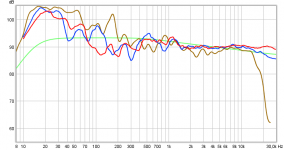I (like many of us here) am experienced with in-room measurements and I think that I can imagine how those room responses sound. That much low bass makes an impression first (big speaker - big sound - wow), but we get tired of that very soon.
I see this kind on responses often, many big speakers with capable low end are tuned to have straight anechoic (or quasi-anechoic) bass response. This is because the curve looks good on paper and you will get admirable figures on product data sheet! But remember what happens in a room, a domestic mid-sized room with heavy walls that don't let bass notes through... Room modes and pressurization below first mode will make surprises when the speaker is capable of producing real low bass. This is why most subwoofers sound terrible with music too.
One thing I was wondering - the curve published in Stereophile was with Room EQ. Makes me even more puzzled... Here is their room curve of Martin Logan Masterpiece Reneissance, but in a different room. This looks like ok sound signature to me! (Red without room EQ) MartinLogan Masterpiece Renaissance ESL 15A loudspeaker Measurements | Stereophile.com
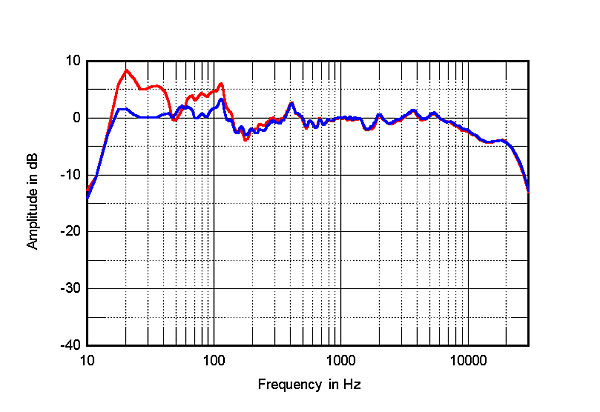
I see this kind on responses often, many big speakers with capable low end are tuned to have straight anechoic (or quasi-anechoic) bass response. This is because the curve looks good on paper and you will get admirable figures on product data sheet! But remember what happens in a room, a domestic mid-sized room with heavy walls that don't let bass notes through... Room modes and pressurization below first mode will make surprises when the speaker is capable of producing real low bass. This is why most subwoofers sound terrible with music too.
One thing I was wondering - the curve published in Stereophile was with Room EQ. Makes me even more puzzled... Here is their room curve of Martin Logan Masterpiece Reneissance, but in a different room. This looks like ok sound signature to me! (Red without room EQ) MartinLogan Masterpiece Renaissance ESL 15A loudspeaker Measurements | Stereophile.com

Now that´s a movie´ish graph
easily done on my own system and i don´t like so heavy bottom end.
but kind of ok if you listen 126db all the time
Samsung/Harman just got on the bandwagon:
An externally hosted image should be here but it was not working when we last tested it.
That looks good!Samsung/Harman just got on the bandwagon:

Now that´s a movie´ish graph
easily done on my own system and i don´t like so heavy bottom end.
but kind of ok if you listen 126db all the time
OK, now I don't think anyone would believe those speakers are capable to play at 126 dB for ever, that is an absolute peak , they are cruising at 110 if one likes it, but most of the time I listen to about 90-105 dB Leq average
That bass is emphased to much by the reverb time
I had these speakers in our showroom for more than 2 months and I listened to them 6 hours a day. We had them in 3 different rooms in the hotel we work and also another one at the final customer. These speakers are exceptional.
Please ask me questions about them if someone is curious about anything.
Hi, any chance you would be demoing these again anytime in the near future here in Bucharest?
Hahaha posted this for you on the recent array thread
Indeed! I'd never seen it before that.
If I understand how the 90 works, I believe that it is a conventional three way loudspeaker on the vertical axis.
IE, there is nothing unusual about it's vertical beamwidth. It's a three-way.
Where things get interesting is on the X-axis, where the Beolab 90 is using beam forming to control the beamwidth of the loudspeaker. Basically those drivers on the side of the enclosure work out of phase to nullify the sound that would normally hit the sidewalls of the listening room. The 'trick' is to use FIR filters that can vary phase with frequency.
An externally hosted image should be here but it was not working when we last tested it.
Andy Wehmeyer from AudioFrog clued me in that the Lexicon speaker is a project of Ulrich Horbach.
Based on that, it's reasonable to speculate that the Lexicon speaker controls directivty in both the X and the Y axis:
1) In the Y axis, it's probably using Keele-Horbach filters to controle the beamwidth
2) In the X axis, it's probably using the same technology as the Beolab 90
Bottom line : it looks like Harman just took the Beolab 90 technology to the next level.
So who's going to DIY this first?
Constant directivity loudspeaker designs
"The BeoLab90 tops what I have heard from any commercial loudspeaker!"
"The BeoLab90 tops what I have heard from any commercial loudspeaker!"
Constant directivity loudspeaker designs
"The BeoLab90 tops what I have heard from any commercial loudspeaker!"
I agree with Linkwitz.
Now why would that beI agree with Linkwitz.
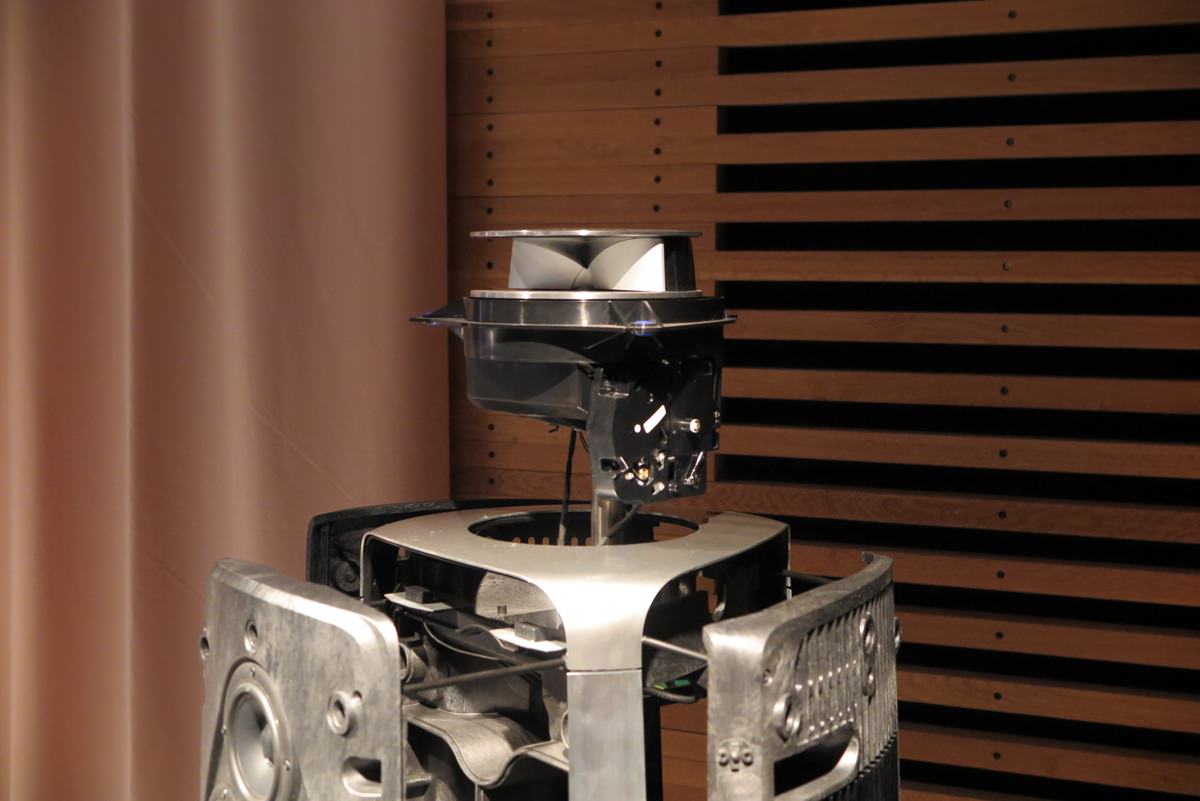
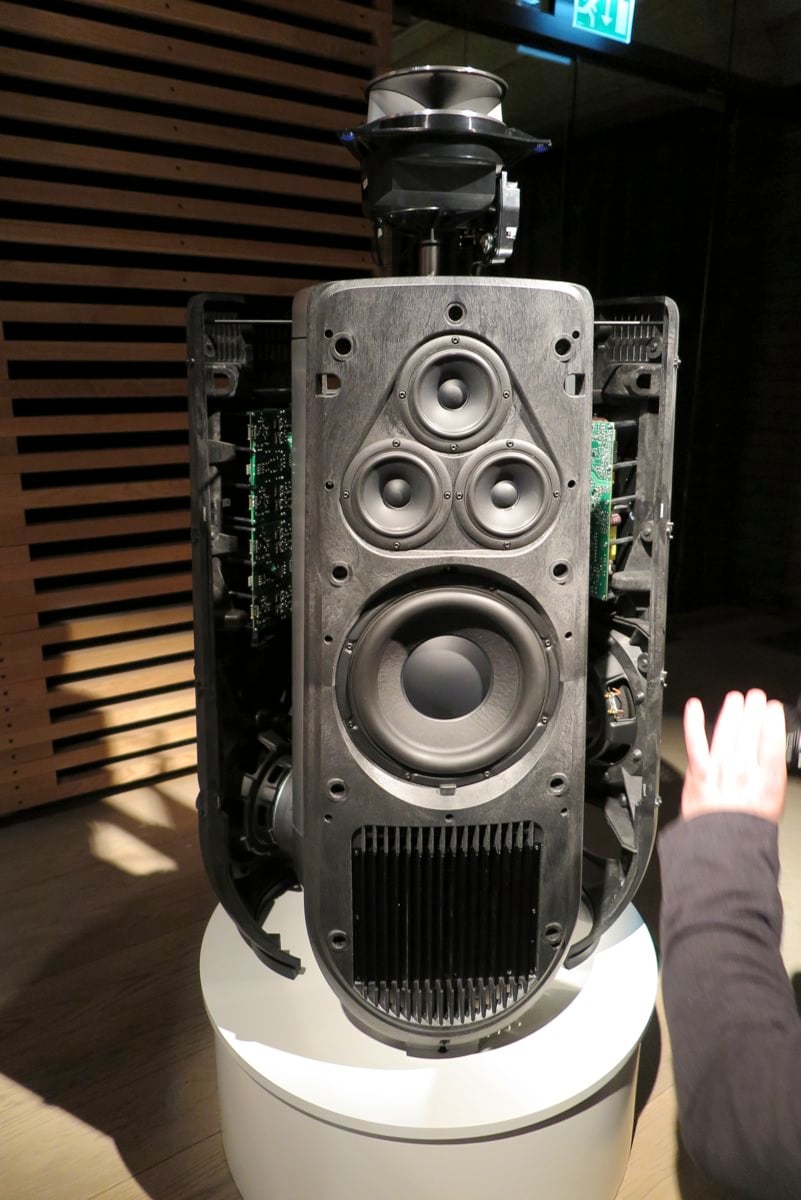
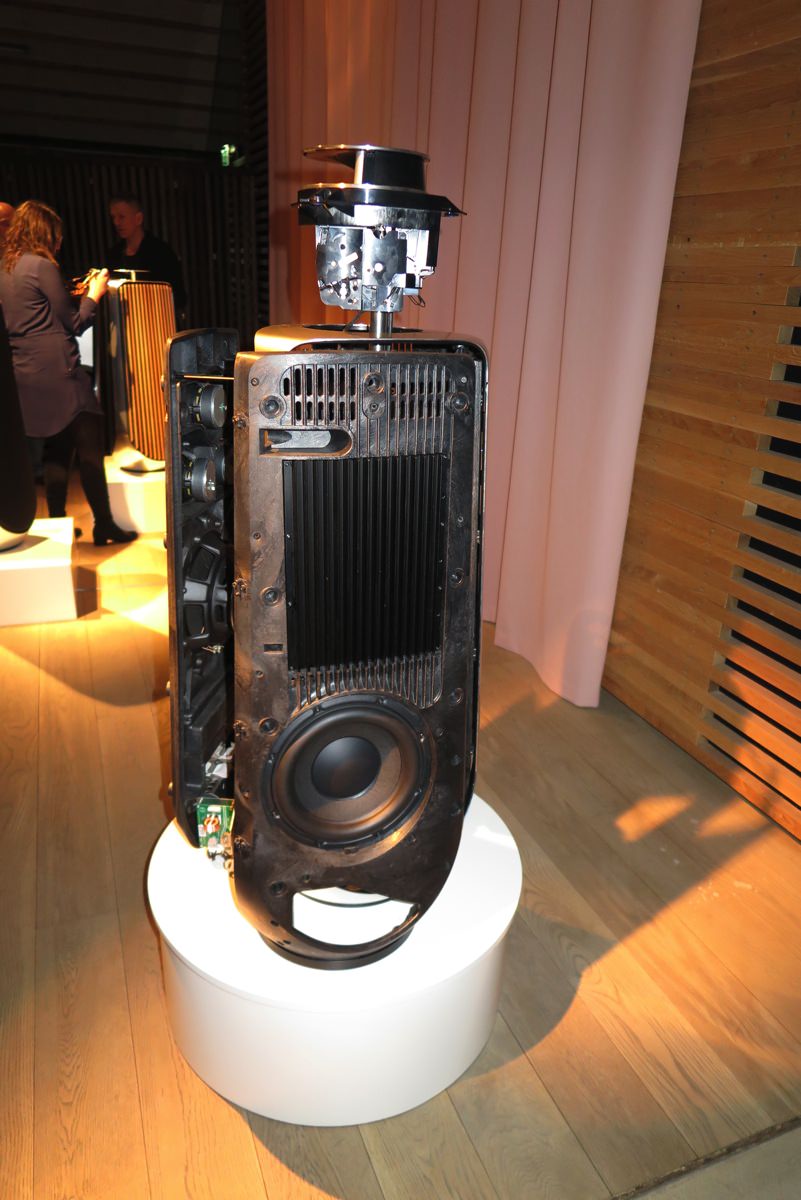
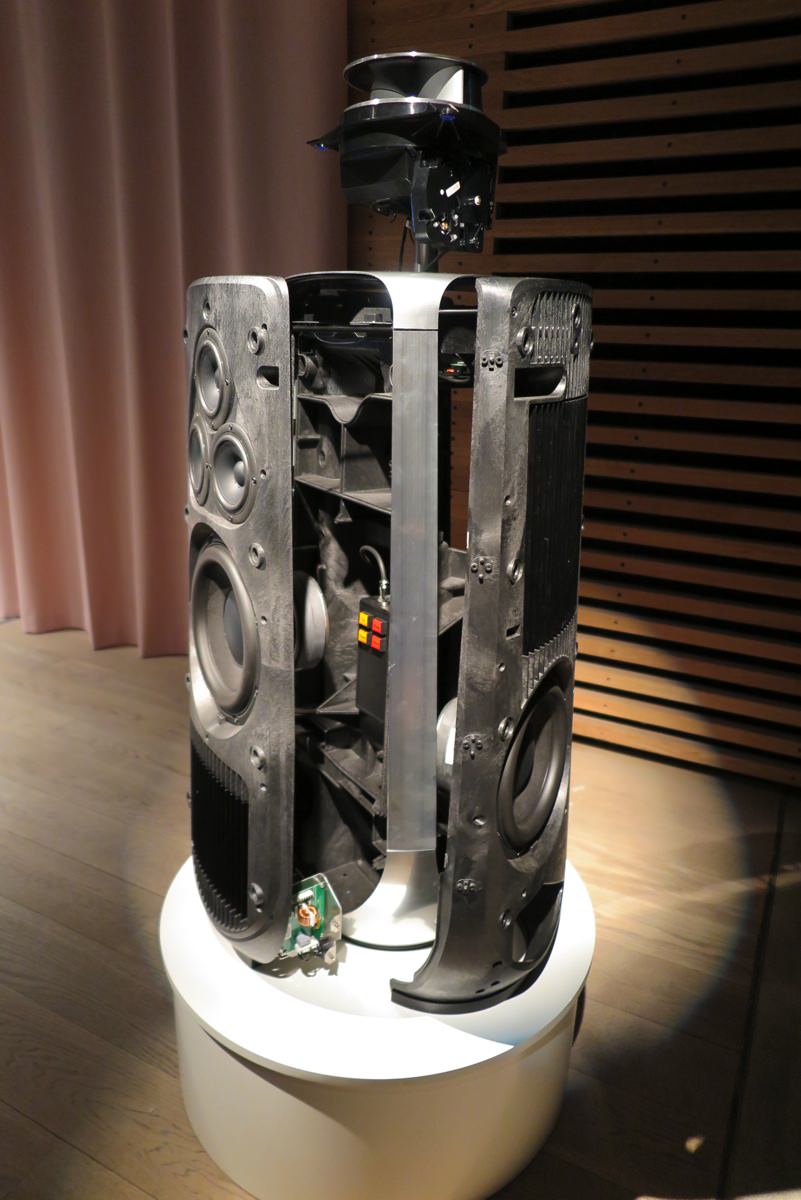
I'm too lazy to read what's been published, but here's some (uninformed) things I notice about the new Beolab 50:
1) bye bye Scanspeak drivers
2) The SAW lens at the top of the speaker appears to control beamwidth mechanically. IE, the walls of the waveguide are motorized. Neat.
3) Like the Beolab 90, it's a three way loudspeaker.
4) To me, the most interesting thing is that it's a mix of three different technologies to control directivity. The high frequencies are obviously controlled by a waveguide. The low frequencies appear to use DSP beam steering. The interesting thing is that the midrange appears to be a resistive cardioid.
As usual, pretty clever engineering from the folks at B&O
.....As usual, pretty clever engineering from the folks at B&O
Agree there
The temperature sensor is a feature that is present in most of the B&O products since 2003.it wasps recording the temperature and it was engaging a limiter. Now in the BL90 and 50 a filter is triggered after a threshold is passed.Agree thereand after had a look at their whitepaper v2 is impressed they implemented modern monitoring sensors to magnets so DSP filters is temperature dependent (thermal compression compensation), also it looks verse model 90 that this time there is a "HIGH" latency mode setting that probably would improve on transients at the cost of 100mS latency should user situation could live with that delay.
Also, one could also change the latency of the beolab 90 from the beginning, but it took a few software updates to get it really work well
Thanks clarify radulescu, about latency we don't know anything before they release visual curves or any review site share their data but step response in narrow mode for BL90 at stereophile was not very impressing, therefor personal was positive to read about "HIGH" latency mode when we have all that DSP power available and only want to listen music in stereo.
Thanks but think there must be a big difference sound wise along the way if its say just a thermal limiter for protection or its both a thermal limiter for protection and also a active temperature dependent filters (thermal compression compensation). Some day they probably add even more motion sensors to correct for other smaller distortion too.
- Status
- This old topic is closed. If you want to reopen this topic, contact a moderator using the "Report Post" button.
- Home
- Loudspeakers
- Multi-Way
- B&O Beolab 90 - adjustable directivity by DSP

